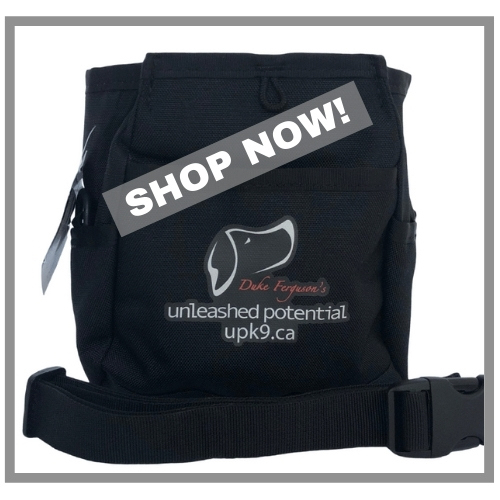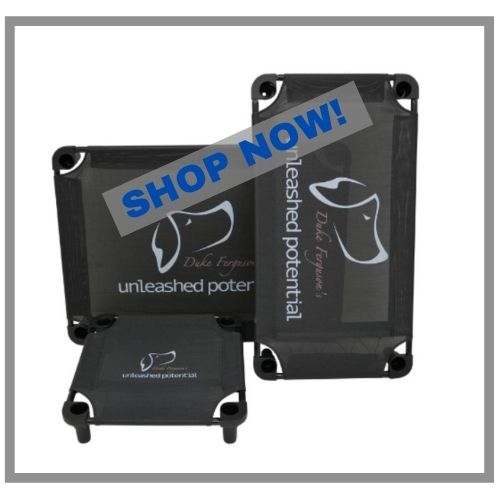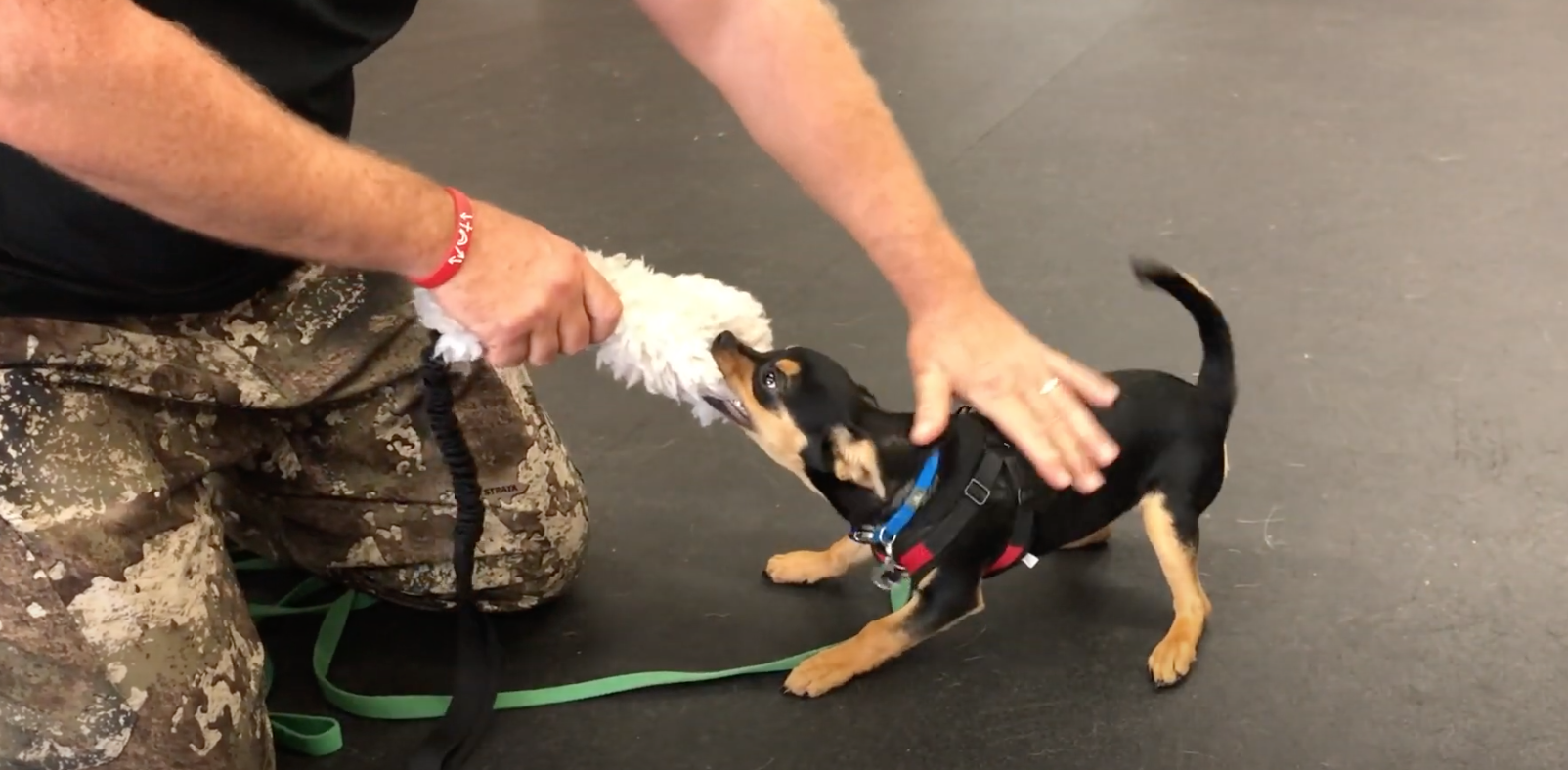SUMMARY
Black Lab Puppy Training | 14 Week Old Koal | Vlog #1
- Welcome, 14 week-old black lab Koal to Unleashed Potential’s puppy training. Koal is going to be a future hunting dog and we are going to invest the time and work with him to be an amazing pet and retrieval dog.
- So what I’m going to do first here with Koal is establish a nice little relationship. I’m going to teach this little black lab a clear communication system. I’m going to teach him how to think and how to put out or “try” and work. He’s going to be a thinking dog!

- In this video, I’ll teach how to charge the release mark for clear communication in this puppy training. I’m going to condition Koal to a verbal mark and a clicker which is a complete release. When I say the word “break”, or I click the clicker I’m just charging or establishing what that actually means. And what does it mean? It means you just did exactly what I wanted. You’re free. Here’s a paycheck.
- Socialization is key in everything that we’re going to do. So with Koal, he is going to be working for his meals; meaning existential food training. He’ll be working for his retrieves, he’ll be working for everything and he’s going to love life!
- If I want a dog to go to something like an elevated place, I can put the food on the surface and let him think about how to get on there. I’ll show him the food on the surface “place” and wait.

- When he jumps up there, I would mark it. He would get a direct reward (the food). A direct reward is to help him there. After he’s comfortable with that I will no longer do that. I will stand here and he has to learn…hey…I need to get on there to make the food come. When he does, I’ll mark and feed him.
Follow along as I post more videos on Koal’s puppy training progress! Click the button below to subscribe to my YouTube channel to receive more videos like this.



Would you like FREE puppy training or dog training advice? OR to just learn more about Duke’s philosophy on dog training? GET ACCESS HERE to his Exclusive, FREE Mini video series. This mini-series is not found on YouTube… Get Access Now… You will love the mini-series and it’s Free!
Contact us HERE
FOLLOW ME!
Full Transcript –
Black Lab Puppy Training |14 Week Old Koal| Vlog #1
[The following is the full transcript of this YouTube video. Please note that this video, features Duke speaking extemporaneously–he is unscripted and unedited. Filmed in one take].
Let’s welcome black lab Koal to Unleashed Potential Puppy training, obedience, and companion training. He’s going to be a hunting dog…we’re going to train him for hunting. Aren’t we Koal? So we’ve got a lot of time on our hands and a lot of work on our hands. Koal is one of my buddies dogs, and he’s here for some intensive work. This is the very first hour that I’ve had him or met him. We’ve done no work together- at all. He has already done retrieves before, at his kennel, which is great. A few long retrieves straight out, but, as far as marks and all kinds of things like obedience and understanding nothing yet. When I say ‘mark’ I’m not talking about retrieves and long things like that, although he’s probably too young and all that. Just knowing his release mark, communication. So what we’re going to do here with Kole is we’re going to first establish a nice little relationship. We’re going to teach him a clear communication system. Yeah, that’s right.
We’re going to teach him how to think and put out and work. Yeah. We’re going to teach him how to retrieve ducks. We’re going to get him going out on different distances when he matures a little more, we’ll get him used to the gun, a whole lot of work. So follow me along with Koal’s progress and enjoy the progress! Right, Koal! So right now, what I’m going to do is I’m going to condition Koal to a verbal mark and a clicker. What it is, is complete release.
All right, so when I say the word “break”, or I click the clicker where you hear me do it, both, I’m just charging or establishing what that actually means.
And what does it mean? It means you just did exactly what I wanted. You’re free. Here’s a paycheck. So basically he’s going to have to learn how to think.
He’s going to have to learn how to try hard. And you know, he’s a little puppy. He’s 14 weeks old. He has only been away from his kennel, uh, for several days. So, he doesn’t know much about the world. There’s a lot of cool things that we’re going to see and be able to show you to overcome with puppy training.
Socialization is key in everything that we’re going to do here. So with Kole, he is going to be working for his meals. We do existential food training.
And like I said, Koal doesn’t really know me at all very well, but he understands food and he’s actually into it. So that’s a good thing. He’ll be working for his meals. He’ll be working for his retrieves. He’s working for everything and he’s going to love life. And that’s if I can instill anything or give you any tips, it basically to them work for it.
So I’m going to start establishing a mark. I’m going to start with a little lure process because we just met and I’ll help him a little bit, but I’m not going to do that very much. And then in later days, he has to do it all on his own without my help, which makes for a much smarter dog. So one of the things I want a dog to do is come to me and actually pay attention. The word good means keep doing what you’re doing, stay in behavior. So he’s sitting there watching me, I say, good, keep doing what you’re doing. Okay. And I can pay that. And I say, good, keep doing what you’re doing. And I pay that. The thing is I want him to learn how to do things. And in order to do things, training is actively doing it again and again and again.
So what I do most often in the very beginning is I charge or I establish what’s called a release mark. So when I say the word break or I hit that clicker as I had mentioned, he’s free and he gets his food. So when I go “break” and I’m going to do both at the same time, then he gets a piece of food. Now he’s going to run over there and he’s going to get it. What does the dog normally do? They come back to you. So I’m already establishing a recall. Good boy! Now he’s a little nervous about me bending over and stuff. I noticed a little while ago. So I’m going to get him desensitized to big, scary Duke over top of him hitting on him and all that stuff. We’re going to make him very, very strong, very, very tough. Cause we have to, he’s going to be a hunting dog and to get him used to all these things.
So he’s sitting there looking to me, he’s giving me a little bit, you know, he’s engaged a little bit. He’s thinking, sits there instead of jumping. “Break” He runs and he gets the food and guess what he does? he comes back. So I can start that. And I’ll show you here. When he comes back to me, I’m actually going to put my hand out here, which is kind of scary. And as he’s coming to me, he’s got to go. Do you want to come a little closer? He’s got to come. This is basic. A lot of people reach down and they want to grab dogs. They want to reach down and touch puppies and notice how he’s a little bit nervous about that, the clicker, and everything. So, I can establish and get him used to be completely desensitized to that. I could be like, he’s got to come through the woods.
This is the woods and these are the trees to get the picnic. You see he’s coming around. So he can’t do that in order for him to eat. He has to be brave. He’s got to try and do something. Okay. So I’m going to show you how I’ll establish that. So I’m going to say “break”. Let him go. When he comes back to me. “Good boy, good, good, good, Boom”. He comes through there and all of a sudden he’s licking the food, licking the food, and I’m able to already get that clicker on his head. See how he’s a little nervous that if he’s to avoid and run away, I’m gonna only try for five minutes. And if he doesn’t try- close the restaurant, we’re going to put you away. You’re going to miss that meal. We’re going to try again. All right. Now what I can do to be all fair is just have him used to the hand and then add the clicker. So we’re just going to take little steps, but in all honesty, he’s got to learn how to come in through that and then break, hit him every release and food. Boom, right there.
Pretty sure that he’s never seen these before and that he’s not just going to be easily lured up here, All right. So I’ve got other options I can do here, but I can basically ahh good boy. Hey, and then throw. So this is a direct lure and it’s also a direct reward. If I want a dog to go to something, I can put the food there. All right. And let them think about how to get on there. So there’s the food I show him it’s right there. And I just let him think, okay if you jumped up there, I would mark it. He would get a direct reward. And I’d also give him what’s called indirect rewards, which I’ll show you if he jumps up there, which hopefully he will. If he won’t, we have one without legs to make it easier. I’m just trying to see where he’s at. You know, just trying to figure him out. Not today. Huh? I’m not hungry enough to get up there. Oh, you’re going to figure it out. At least. He’s trying
Get up there. You can do it. You can do it. Let’s go over this easy one. Let’s get success. We want to build success. So let’s do this. Shall we? Let’s get him on there. Here you go, break. Yeah, buddy. Nice work. Oh, you want to get this? Come on. And inside, there you go. It’s really neat to see this and why I want to show this right now. As you can see the insecurities, but as you’ll see other training days, go by, he’s going to fly into me with confidence. And that’s the cool thing I want to show you.
All on your own. Good boy. Good job buddy. Yeah. Awesome work. Very good. I’m giving a direct lure right there. Like a direct reward to help him on there. After he’s comfortable with that. No, I will not do that. I will stand here and he has to learn, Hey, I need to go on there to make Duke, give me that mark and feed him. That’s perfect. That’s exactly what I want to do right there.
So now I’m not using bribes and lures constantly. I’ll do a little bit. Just like I said, a couple of times, if any, just to help prime the pumps start the process.
Years ago I used to do it over and over and over and phased down over 200 reps. That’s a lot. It works fantastic, don’t get me wrong. What I’m doing is just a little bit deeper level of thought process. So that Koal and any dog that’s actually working at this, you know, this methodology, is it deeper thinker? They’re more of a problem solver on their own and that’s what we want. So he’s going to run around and go see Shelley. Yeah. Cute little guy. Koal, come, yeah, good boy. All right.
Gotta get touched and held in the collar and eat. So what I call this is touch and feeds. Notice how he’s like, oh, I don’t want that. I want the dog to be like, yeah, bang. Put his bum on the ground and expect somebody reaching down, grabbing him. And every time people reach down and grab him, he’ll have hope of, ah, food comes. So we’re going to get rid of that. And we’re going to make him super, super confident. And that’s just normal for little guys. Right? Hi. So cute.
So getting him socialized, getting him understanding some leadership, some thought process, obedience all on his own. He’s going to be a smart cookie.
Aren’t ya? Right. So if you’d to watch Koal grow and learn new skills, and if you want to learn training tips and socialization tips yourself, then I invite you to follow along with this little black lab and me on this journey. Make sure you don’t miss any of these videos by clicking subscribe and then turn on your notifications. And as always, if you like these videos and you find them of value, be sure to help us help other people by just simply liking and sharing so that others may be able to find the same value you have. Thanks for watching and I hope to see you in the next video.








